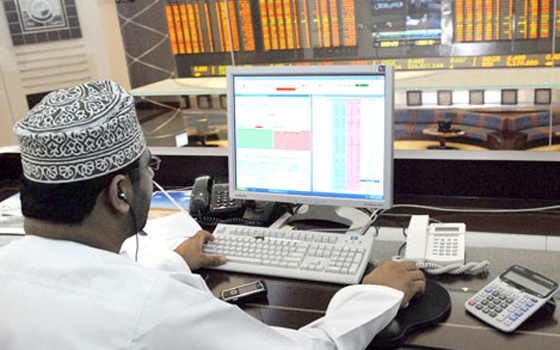International credit-rating agency Standard & Poor's predicted a stable outlook for Oman's economy, with a real growth of five per cent each in 2013 and 2014. "We expect Oman to maintain a strong growth momentum. We estimate that economic growth remains at about five per cent in 2012, boosted by high government spending, coupled with high private consumption and investment," said a report released by Standard & Poor's.
The rating agency added that the government's fiscal performance is expected to remain favorable in the next three years, allowing for sufficient room to address the high social spending expected during the period. Per-capita gross domestic product (GDP) is expected to be $29,109 this year and $30,654 the following year, against $27,654 last year.
Standard & Poor's assigned a sovereign rating of A/A-1 to Oman in July last year, which was supported by the rating agency's assessment of the Sultanate's substantial net external and general government asset positions and prudent investment policies, and constrained by a heavy dependence on hydrocarbons and a challenging demographic profile — 60 per cent of the Omani population is under the age of 25 years.
The report said that the country's economic strengths include a large net asset position (which gives the government substantial fiscal flexibility), strong net external creditor position (which allows Oman to withstand external shocks), and prudent use of oil revenue for social development and public investment programs with a view to enhance non-oil growth.
However, its weaknesses include under-developed political institutions, heavy reliance on the hydrocarbon sector and a fixed exchange rate and underdeveloped domestic-capital market, which are constraining the government's policy flexibility.
The report also noted that the government responded to the unrest in 2011 by increasing wages and other benefits and by committing to the creation of up to 75,000 jobs. "We expect a significant share of these to be generated in the public sector. While we anticipate that social spending will rise between 2012 and 2015, we expect that the government's resources will be sufficient to manage this increase without incurring a weakening in its fiscal buffers."
Despite the increase in the public-sector wage bill, and the full-year effect of the increase in the social and unemployment benefits instituted in 2011, the rating agency expects the fiscal surplus to have reached about nine per cent of GDP in 2012, based on an oil-export price of $112 per barrel. Oman's government is in the process of identifying projects that will benefit from the GCC Development Fund. However, so far, there has been no confirmation that GCC donor countries will begin to disburse funds in 2013.
The report said Oman's economy is vulnerable to trade shocks, given its high dependence on the hydrocarbon sector. "However, this is partially mitigated by the government's large financial buffer." Standard & Poor's said the country's nominal GDP (or GDP at market price) is expected to grow to OMR34.7 billion in 2013 and to OMR37.8 billion in 2014, against OMR31.9 billion last year.
The hydrocarbon sector continues to be an important engine of growth, accounting for 51 per cent of the nominal GDP in 2011. By utilising enhanced oil-recovery technologies and large upstream investments, Oman has been able to sustain its oil reserve level at 5.5 billion barrels of oil and reverse a previous decline in production.
The Sultanate's government has been channeling funds towards large-scale infrastructure projects, including the Special Economic Zone at Duqm, Duqm port and the drydock.
Times of Oman
22 January

























































